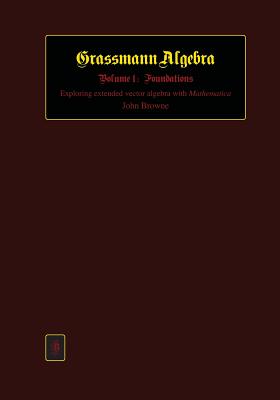Grassmann Algebra Volume 1: Foundations Exploring extended vector algebra with Mathematica Grassmann algebra extends vector algebra by introducing the exterior product to algebraicize the notion of linear dependence. With it, vectors may be extended to higher-grade entities: bivectors, trivectors, ... multivectors. The extensive exterior product also has a regressive dual: the regressive product. The pair behaves a little like the Boolean duals of union and intersection. By interpreting one of the elements of the vector space as an origin point, points can be defined, and the exterior product can extend points into higher-grade located entities from which lines, planes and multiplanes can be defined. Theorems of Projective Geometry are simply formulae involving these entities and the dual products. By introducing the (orthogonal) complement operation, the scalar product of vectors may be extended to the interior product of multivectors, which in this more general case may no longer result in a scalar. The notion of the magnitude of vectors is extended to the magnitude of multivectors: for example, the magnitude of the exterior product of two vectors (a bivector) is the area of the parallelogram formed by them. To develop these foundational concepts, we need only consider entities which are the sums of elements of the same grade. This is the focus of this volume. But the entities of Grassmann algebra need not be of the same grade, and the possible product types need not be constricted to just the exterior, regressive and interior products. For example quaternion algebra is simply the Grassmann algebra of scalars and bivectors under a new product operation. Clifford, geometric and higher order hypercomplex algebras, for example the octonions, may be defined similarly. If to these we introduce Clifford's invention of a scalar which squares to zero, we can define entities (for example dual quaternions) with which we can perform elaborate transformations. Exploration of these entities, operations and algebras will be the focus of the volume to follow this. There is something fascinating about the beauty with which the mathematical structures that Hermann Grassmann discovered describe the physical world, and something also fascinating about how these beautiful structures have been largely lost to the mainstreams of mathematics and science. He wrote his seminal Ausdehnungslehre (Die Ausdehnungslehre. Vollständig und in strenger Form) in 1862. But it was not until











